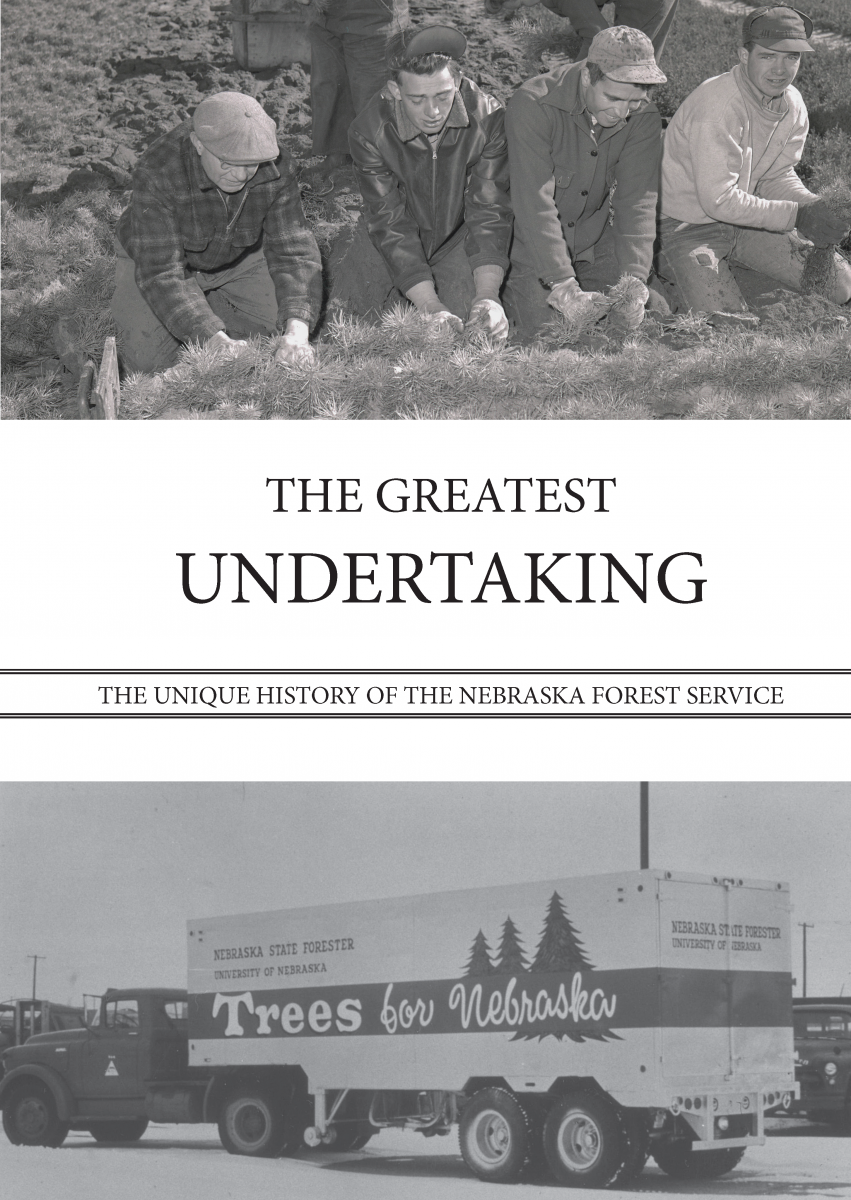Recognition of the need for forestation and care of existing forests has been a consistent priority for Nebraska. For more than 100 years, forestry has been a part of Nebraska’s work and mission, performed under the scope of several different state and university entities.
As early as 1903, the University of Nebraska Department of Forestry offered a four-year Bachelor of Science degree. Francis Miller was the first professor of forestry. In College of Agriculture of the University of Nebraska-Lincoln: The First Century, Elvin Frolik and Ralston Graham wrote, “That the university had high hopes for forestry is evident from the extent of the forestry curriculum as listed in the 1904-05 bulletin.” Eight different courses were offered at that time--forest measurements, utilization, policy and farm forestry.
Though the department had distinguished graduates and an “excellent reputation,” it was abolished in 1915, “Due apparently to the dearth of natural forests in the state,” according to Frolik and Graham.
In 1920-21, the university again offered a farm forestry course and the Clarke-McNary Act, passed in 1924 by the U.S. Congress, established an extension forester position for duties that included tree distribution, education, establishment of fire control districts and efforts toward fire suppression. Clayton Watkins was the first to hold this position in 1925, followed by Earl Maxwell and Carl Loerch.
Horning Farm was bequeathed to the University of Nebraska-Lincoln in 1950 for "forestry purposes." By 1953, Ralph Reed became the first “forester,” and formal research in forestry was initiated in 1955 when Walt Bagley was hired and given responsibility for a tree improvement program.
In 1959, shortly after Joseph Young was named the chairman of the Department of Horticulture, forestry was added to this unit, which was renamed the Department of Horticulture and Forestry. That same year, the UNL Department of Horticulture & Forestry was assigned management responsibility for the farm. Cooperative research began in 1960 with UNL and the USDA Forest Service. Today, the farm is known as the Horning Demonstration Forest.
The Nebraska Legislature created the office of State Forester in 1967, removing this position and its responsibilities from the “Game, Forestation and Parks Commission” and placing it under the authority of the university. Ellsworth Benson was the first acting state forester.
The funding for forestry efforts came primarily from federal funds but had to be offset by state funding so the university’s extension forestry funds could then be used to offset U.S. Forest Service monies. Many of the duties at that time were focused on fire: turning surplus property into rural fire-fighting equipment; reimbursement for local volunteer fire districts; and training in rural fire protection. Other efforts involved educating communities about how to deal with challenges like Dutch elm disease and the distribution of trees. Under the Clarke-McNary program, tree distribution grew from about 30,000 trees in 1926 to 2.5 million by 1967.
Forestry remained combined with horticulture until 1974, when a new Department of Forestry was designated with State Forester Ellsworth Benson as its acting head. It remained its own department until 1977 when it was included as part of “Forestry, Fisheries and Wildlife.” This unit was transferred to the new School of Natural Resources (SNR) created in 1998. Since then, the Nebraska Forest Service has administratively been a part of the Institute of Agriculture and Natural Resources (IANR) and affiliated with the School of Natural Resources.
In 1999, management responsibility for Horning State Farm was transferred to the Nebraska Forest Service. In 2009, the Nebraska Statewide Arboretum (NSA) merged with NFS and began operating as an NFS program with the mission of “sustainable landscapes for healthy homes and communities” through initiatives in education, community landscapes, and the environment.
New Book Chronicles Nebraska's Forestry History

Perhaps forests and trees are not the first images one conjures when thinking about Nebraska. Indeed, an old joke claims the Nebraska State Tree is a wooden football goalpost. Yet Nebraska has a unique forestry history. Pioneers of the mid-nineteenth century moved into what was popularly known as the Great American Desert, and they rolled the dice that this semi-arid land, seemingly incapable of sustaining trees, could somehow grow crops. After winning that gamble, the settlers yearned for the trees they had grown accustomed to in the Eastern United States. They missed the beauty of the wooded areas and the respite of a shade tree. Moreover, they needed windbreaks to slow soil erosion and crop damage. Homesteaders would take advantage of timber claim opportunities and plant trees 40 acres at a time. Nebraska would become the “Tree Planter’s State”. J. Sterling Morton would found Arbor Day. And Nebraskans would toil in their own blood and sweat to create the nation’s largest hand-planted forest reserve.
This incredible tale is now chronicled in a new book by author Tony Foreman. In "The Great Undertaking: The Unique History of the Nebraska Forest Service" Foreman intricately pieces together the role of trees in the Arbor Day State. From the high-profile days of forestry research to the largest wildfires in the state’s history, this book is just as much about Nebraskans as it is about trees.
A limited supply of books are available for $15 via cash or check (made payable to the University of Nebraska-Lincoln).